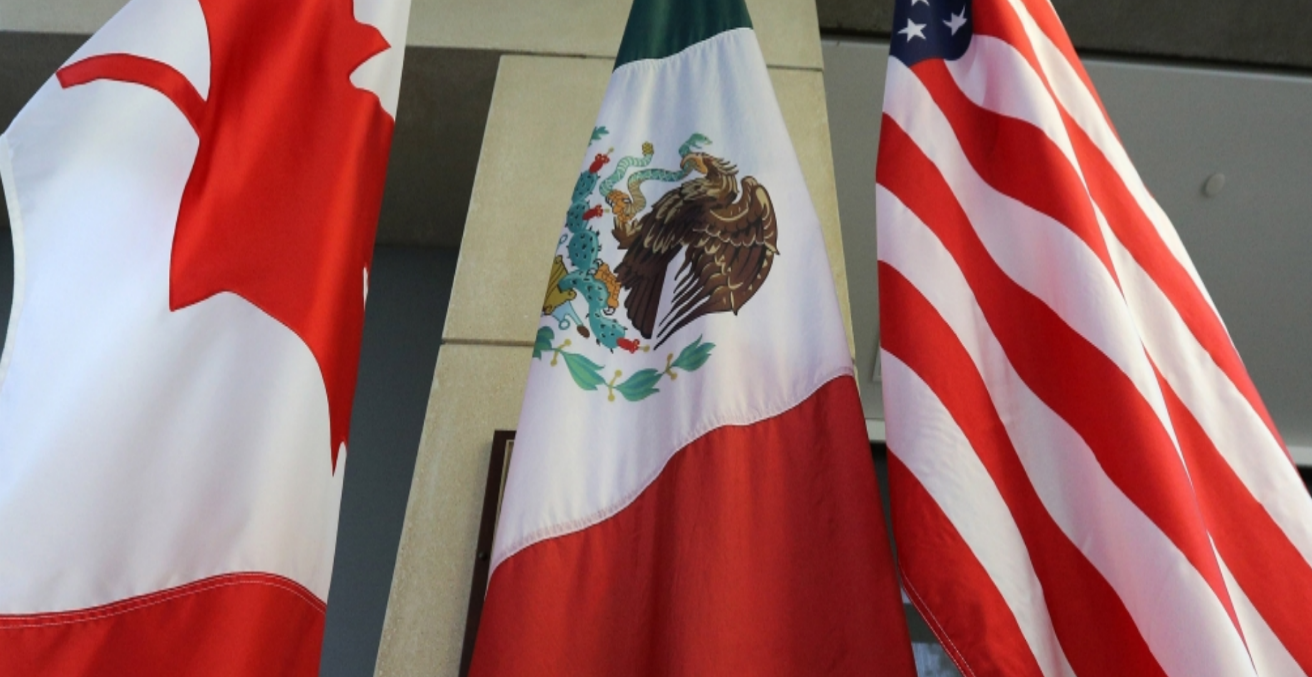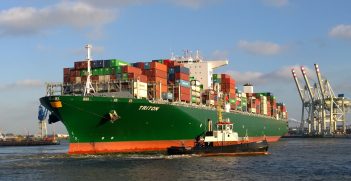The New NAFTA: Trade Agreement By Extortion

Now that the US-Mexico-Canada Agreement is a reality, Mexico and Canada can assess the extent of the damage.
Last Tuesday, the new United States-Mexico-Canada Agreement (USMCA) was announced to replace the North Atlantic Free Trade Agreement (NAFTA). As an economic deal, the USMCA makes little sense and is not so different from the former NAFTA. As a political deal, only the American side can claim victory after months of arm-twisting and blackmail.
NAFTA in Trump’s sights
In November 2016, the election of Donald Trump as American President sealed NAFTA’s fate. Throughout his campaign, Trump swore to the American people that he would re-negotiate NAFTA or rip it up. Canada and Mexico remained interested – if not bemused – bystanders, having both been castigated as the culprits for America’s economic woes and a whopping trade deficit. Neither Canada nor Mexico had any desire to ‘modernise’ NAFTA, and this was interpreted by Trump supporters as yet another sign why NAFTA was bad for America with negative results including loss of the manufacturing sector, especially to Mexico, and difficulties in agricultural access to certain markets like the dairy industry in Canada.
Shortly after President Trump’s inauguration in early 2017, the parties sat down to meet. At first, most concern was expressed from the Mexican side which had been the object of Trump’s illegal immigration narrative and is responsible for much more of the American trade deficit than the Canadian side. Canada’s strategy was to stay off the Trump radar while musing about the importance of updating NAFTA.
It became apparent that both the Mexican and Canadian sides were loath to make the desired changes: increased access to the Canadian dairy market; stricter rules of origin for North American automobiles including an insistence on higher wages for Mexican workers to deter US companies from transferring their factories and jobs south; a five-year sunset clause; elimination of the cultural exception for Canada; and the Chapter 19 independent disputes panel mechanism. To the bewilderment of most observers – and the delight of the Mexicans – Trump directed most of his venom towards Canada. To extort concessions, the US imposed significant tariffs on Canadian and Mexican steel and aluminium imports based on a dubious national security criterion.
Who blinked?
The Mexicans caved in first. The newly-elected government did not want the new trade agreement on its plate. Realising the unpredictability of the US President and his need for congressional approval before the November mid-term elections, Mexico began to meet secretly with US negotiators.
Canadian officials were not invited in August to attend the sessions. Discovering this, Canadian officials responded that the bilateral negotiations were about Mexican wage and labour standards and not about tripartite issues. This was false since the sunset clause, Chapter 19 and other issues of general concern to Canada were in fact discussed. Once the US and Mexico agreed to a text, Trump threatened to take the bilateral package to Congress if Canada continued its “intransigence.”
The gambit – along Trump’s vitriolic tweets aimed at the Canadian government – worked. The Canadians scurried back to the negotiations in September and signed a bad deal making concessions on dairy, pharmaceuticals, automobiles and more. Mexico, thankful the US had separated the wall and immigration from commerce and trade, felt lucky to save some of the old NAFTA.
What was actually agreed?
The USMCA is a political accord. Its motivation was political and it is intended to curry favour with Trump’s electoral base. By imposing higher wage standards on Mexican auto workers, Trump fulfils a promise made to organised labour in the US. These voters – many of whom are located in the rust belt – are critical to Trump and the Republican Party. Trump can also point to higher milk quotas in Canada for US dairy farmers in Wisconsin and elsewhere.
Does the USMCA really solve America’s trade deficit? Well, in automobiles, the agreement makes North America a more protected zone; that is, less free trade. Strengthening the rules of origin by insisting that more cars be built in the US may temporarily help American workers keep their jobs, but it will also increase the price of a North American car. If fewer cars are sold, fewer will be built and foreign cars will invade the market despite a 2.5 per cent US tariff. That is why US car companies have not embraced USMCA provisions. Mexico is notorious for not enforcing standards and no one knows whether automobile workers’ wage increases to international standards will ever take place. Wisconsin farmers will have to continue to dump their surplus production of milk, since the factory designed to transform Class 7 protein-based milk products has not yet been built. Drug prices will also rise due to new USMCA provisions applying to intellectual property. The Chapter 19 dispute resolution mechanism remains toothless, having no enforcement value, and is good only for politicians to point to for spin and political cover.
Implications
Mexican and Canadian officials argue that redemption can be found in that the USMCA secures a measure of US market access and that the worst has been avoided. Yet, neither Canada nor Mexico were able to secure the lifting of punitive tariffs on steel and aluminium, and the bogus national security stratagem remains in place.
Canada and Mexico have also lost control over future trade deals. The USMCA circumscribes the area within which Canada and Mexico can exercise fully-independent foreign policy. Both countries are part of the Trans-Pacific Partnership (TPP), but the USMCA envisages a consultative process if either country wishes to develop a trade agreement with a ‘non-market’ economy. Setting aside how to define such economies, the obvious target is China. If Canada or Mexico wishes to sign an agreement with China, such an accord would require seeking the assent of the US. Reciprocity cannot be enforced and is a worthless concession.
Mexicans and Canadians can recognise the contours of the US historical policy of Manifest Destiny. Over the years, this policy has cost both countries territory, lives and economy. Many thought that the policy was dead under the weight of history and the development of US democratic institutions. The USMCA means it is alive and ready to strike at any time.
If Mexico and Canada had waited out Trump and ignored the abusive Twitter tirades, the trade question might have been addressed at the mid-term elections in November. A Democratic Party landslide might be possible, but this is a dangerous gamble with serious drawbacks if it doesn’t work. Instead, the USMCA is now the raw meat given to the right-wing Republican base as a simplistic panacea for America’s trade ills.
Dr Bruce Mabley is the director of the Mackenzie-Papineau Group think tank based in Montreal devoted to analysis of international politics. He is a former Canadian diplomat and is decorated by the French Republic as Chevalier des Palmes Académiques.
This article is published under a Creative Commons Licence and may be republished with attribution.





